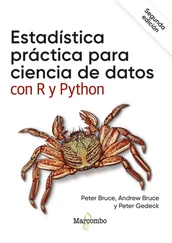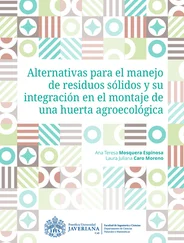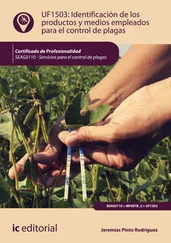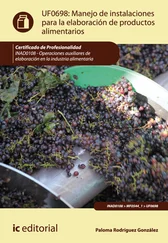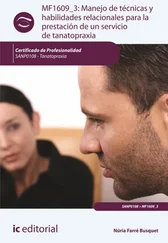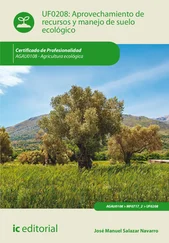Clavijo-Baquet, S., Boher, F., Ziegler, L., Martel, S. I., Estay, S. A., y Bozinovic, F. (2014). Differential responses to thermal variation between fitness metrics. Scientific Reports, 4, 5349.
Clavijo-Baquet, S., y Bozinovic, F. (2012). Testing the fitness consequences of the thermoregulatory and parental care models for the origin of endothermy. PLOS ONE , 7(5) e37069.
Cortes, P. A., Puschel, H., Acuña, P., Bartheld, J. L., y Bozinovic, F. (2016). Thermal ecological physiology of native and invasive frog species: do invaders perform better? Conservation Physiology , 4(1), cow056.
Easterling, D. R., Horton, B., Jones, P. D., Peterson, T. C., Karl, T. R., Parker, D. E., Salinger, M. J., Razuvayev, V., Plummer, N., Jamason, P., y Folland, C. K. (1997). Maximum and minimum temperature trends for the globe. Science, 277(5324), 364-367.
Estay, S. A., Clavijo-Baquet, S., Lima, M., Bozinovic, F. (2011). Beyond average: an experimental test of temperature variability on the population dynamics of Tribolium confusum. Population Ecology , 53(1), 53-58.
Estay, S. A., Lima, M., y Bozinovic, F. (2014). The role of temperature variability on insect performance and population dynamics in a warming world. Oikos, 123 (2), 131-140.
Folguera, G., Bastías, D. A. y Bozinovic, F. (2009). Impact of experimental thermal amplitude on ectotherm performance: adaptation to climate change variability? Comparative Biochemistry and Physiology Part A: Molecular & Integrative Physiology , 154(3), 389-393.
Foray, V., Gibert, P., y Desouhant, E. (2011). Differential thermal performance curves in response to different habitats in the parasitoid Venturia canescens . Naturwissenschaften, 98, 683-691.
Gilchrist, G. W., y Huey, R. B. (2001). Parental and developmental temperature effects on the thermal dependence of fitness in Drosophila melanogaster . Evolution , 55, 209-214.
Hoffmann, A. A. (2010). Physiological climatic limits in Drosophila : patterns and implications. Journal of Experimental Biology , 213, 870-880.
Huey, R. B., Kearney, M. R., Krockenberger, A., Holtum, J. A., Jess, M., y Williams, S. E. (2012). Predicting organismal vulnerability to climate warming: roles of behaviour, physiology and adaptation. Philosophical Transactions of the Royal Society B , 367(1596), 1665-1679.
Kingsolver, J., Diamond, S., y Gomulkiewicz, R. (2014). Curve thinking: understanding reaction norms and developmental trajectories as traits. En L. Martin, C.K. Ghalambor, H.A., Woods (Eds.) Integrative Organismal Biology (pp. 39-53). New Jersey: John Wiley y Sons, Inc.
Kingsolver, J.G. (2009). The well-temperatured biologist: (American Society of Naturalists Presidential Address). The American Naturalist, 174(6), 755-768.
Komoroske, L., Connon, R., Lindberg, J., Cheng, B., Castillo, G., Hasenbein, M., y Fangue, N. (2014). Ontogeny influences sensitivity to climate change stressors in an endangered fish. Conservation Physiology, 2(1): cou008.
Kozłowski, J. (1993). Measuring fitness in life, history studies. Trends in Ecology and Evolution , 8(3), 84-85.
Lafferty, K. D. (2009). The ecology of climate change and infectious diseases. Ecology, 90(4), 888-900. Lawson, C.R., Vindenes, Y., Bailey, L., y Pol, M. (2015). Environmental variation and population responses to global change. Ecology letters, 18 (7), 724-736.
Ma, G., Hoffmann, A. A., y Ma, C. S. (2015). Daily temperature extremes play an important role in predicting thermal effects. Journal of Experimental Biology , 218, 2289-2296.
Meehl, G. A., y Tebaldi, C. (2004). More intense, more frequent, and longer lasting heat waves in the 21st century. Science, 305(5686), 994-997.
Mitchell, K. A. y Hoffmann, A. (2009). Thermal ramping rate influences evolutionary potential and species differences for upper thermal limits in Drosophila. Functional Ecology, 24(3), 694-700.
Noireau, F., Cortez, M. G. R., Monteiro, F. A., Jansen, A. M., y Torrico, F. (2005). Can wild Triatoma infestans foci in Bolivia jeopardize Chagas disease control efforts? Trends in Parasitology , 21(1), 7-10.
Nyamukondiwa, C., y Terblanche, J. S. (2009). Thermal tolerance in adult Mediterranean and Natal fruit flies (Ceratitis capitata and Ceratitis rosa): effects of age, gender and feeding status. Journal of Thermal Biology , 34(8), 406-414.
Paaijmans, K. P., Blanford, S., Bell, A. S., Blanford, J. I., Read, A. F., y Thomas, M. B. (2010). Influence of climate on malaria transmission depends on daily temperature variation. Proceedings of the National Academy of Sciences, 107(34), 15135-15139.
Paaijmans, K. P., Heinig, R. L., Seliga, R. A., Blanford, J. I., Blanford, S., Murdock, C. C., y Thomas, M. B. (2013). Temperature variation makes ectotherms more sensitive to climate change. Global Change Biology, 19(8), 2373-2380.
Pachauri, R. K., y Reisinger, A. (2007). Cambio climático 2007: Informe de Síntesis. Contribución de los grupos de trabajo I, II y III al Cuarto Informe de evaluación del Grupo Intergubernamental de Expertos sobre el Cambio Climático (IPCC).
Pascual, M., y Bouma, M. J. (2009). Do rising temperatures matter. Ecology, 90(4), 906-912. Pásztor, L., Meszena, G., y Kisdi, E. (1996). R 0or r: a matter of taste? Journal of Evolutionary Biology, 9(4), 511-516.
Pörtner, H.O. (2002). Climate variations and the physiological basis of temperature dependent biogeography: systemic to molecular hierarchy of thermal tolerance in animals. Comparative Biochemistry and Physiology Part A: Molecular & Integrative Physiology , 132(4), 739-761.
Puurtinen, M., Elo, M., Jalasvuori, M., Kahilainen, A., Ketola, T., Kotiaho, J. S., Mönkkönen, M., y Pentikäinen, O. T. (2016). Temperature dependent mutational robustness can explain faster molecular evolution at warm temperatures, affecting speciation rate and global patterns of species diversity. Ecography 39(11), 1025-1033.
Rezende, E.L., Tejedo, M., y Santos, M. (2011). Estimating the adaptive potential of critical thermal limits: methodological problems and evolutionary implications. Functional Ecology , 25(1), 111-121.
Rezende, E. L., Castañeda, L. E., y Santos, M. (2014). Tolerance landscapes in thermal ecology. Functional Ecology, 28 (4), 799-809.
Ricker, W. E. (1958). Maximum sustained yields from fluctuating environments and mixed stocks. Journal of the Fisheries Board of Canada , 15(5), 991-1006.
Roff, D. A. (2010). Modeling evolution: an introduction to numerical methods. Oxford: Oxford University Press.
Saxon, A. D., O’brien, E. K., y Bridle, J. R. (2018). Temperature fluctuations during development reduce male fitness and may limit adaptive potential in tropical rainforest Drosophila . Journal of Evolutionary Biology, 31 (3), 405-415.
Schofield, C. J., Jannin, J., & Salvatella, R. (2006). The future of Chagas disease control. Trends in parasitology , 22(12), 583-588.
Schulte, P. M., Healy, T. M., y Fangue, N. A. (2011). Thermal performance curves, phenotypic plasticity, and the time scales of temperature exposure. Integrative and Comparative Biology , 51(5), 691-702.
Sinclair, B. J., Marshall, K. E., Sewell, M. A., Levesque, D. L., Willett, C. S., Slotsbo, S., y Huey, R. B. (2016). Can we predict ectotherm responses to climate change using thermal performance curves and body temperatures? Ecology Letters , 19(11), 1372-1385.
Sunday, J. M., Bates, A. E., y Dulvy, N. K. (2010). Global analysis of thermal tolerance and latitude in ectotherms. Proceedings of the Royal Society of London B: Biological Sciences, rspb20101295.
Читать дальше


